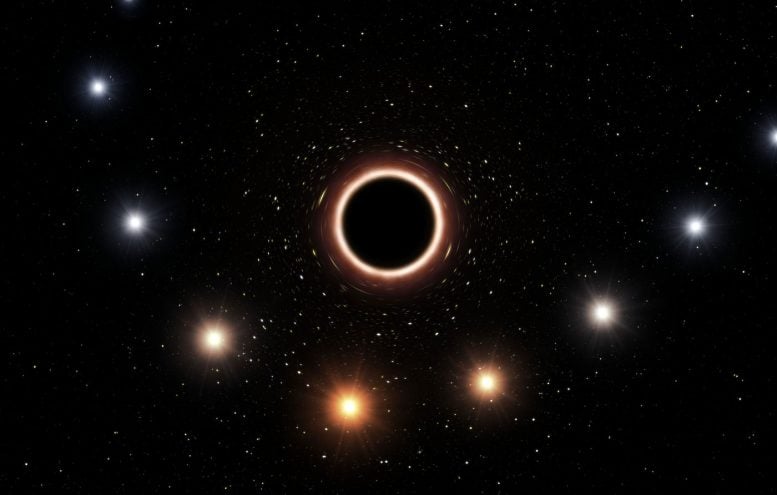
Color change: This illustration shows the star S2 passing the black hole in the galactic center. The gravitational redshift, caused by the extremely strong gravitational field, is clearly visible. Credit: © ESO/M. Kornmesser
Astronomers conduct successful test of Einstein’s general theory of relativity near supermassive black hole.
The massive black hole at the heart of the Milky Way is an ideal cosmic laboratory for all kinds of physical tests. Its extremely strong gravitational field influences the surrounding area and has an impact on the motion of stars passing by. Scientists at the Max Planck Institute for Extraterrestrial Physics (MPE) have now observed an effect that had been predicted by Albert Einstein with his general theory of relativity more than 100 years ago. The discovery of this gravitational redshift represents the climax of a 26-year-long observation campaign using telescopes of the European Southern Observatory (ESO) in Chile.
The closest supermassive black hole to the Earth lies 26,000 light-years away at the center of the Milky Way. This gravitational trap, which has a mass four million times that of our Sun, is surrounded by a small group of stars orbiting around it at high speed. This region, with the strongest gravitational field in our galaxy, is the perfect place to explore gravitational physics, and particularly to test Einstein’s general theory of relativity.
This artist’s impression video shows the path of the star S2 as it passes very close to the supermassive black hole at the center of the Milky Way. As it gets close to the black hole the very strong gravitational field causes the color of the star to shift slightly to the red, an effect of Einstein’s general theory of relativity. In this graphic the color effect, speed, and size of the objects have been exaggerated for clarity.
In order to observe the galactic center, the astronomers use sensitive instruments such as Gravity, Sinfoni, and Naco. All these belong to the ESO’s Very Large Telescope, were constructed under the leadership of the Max Planck Institute for Extraterrestrial Physics (MPE), and scrutinize the sky in an infrared light. Now, researchers have turned their attention to a star called S2 and followed it on its orbit around the black hole, to which it came particularly close a few weeks ago.
The shortest distance between S2 and the black hole, on 19 May, was approximately 14 billion kilometers. Here, the star moved at a speed in excess of 25 million kilometers per hour – almost three percent of the speed of light. It takes about 15 years to complete its full orbit.
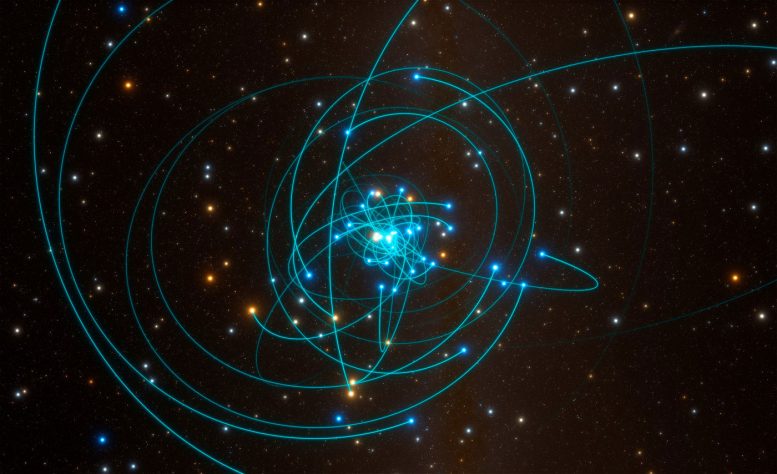
Cosmic swarm of bees: The simulation shows the star trajectories near the supermassive black hole at the heart of the Milky Way. © ESO/L. Calçada/spaceengine.org
The scientists compared the position and velocity measurements from Gravity and Sinfoni, along with the measurements taken during previous observations of S2, with the predictions of Newtonian gravitational physics, the general theory of relativity, and other theories of gravity. In fact, the new results are inconsistent with Newtonian predictions, although they are in excellent agreement with the predictions of the general theory of relativity.
“This is the second time that we have observed the close passage of S2 around the black hole in our galactic center. But this time, because of much improved instrumentation, we were able to observe the star with unprecedented detail resolution,” explains Richard Genzel, Director of the Max Planck Institute for Extraterrestrial Physics (MPE) in Garching near Munich, and head of the international team of scientists.
This time-lapse view shows images from the GRAVITY instrument on ESO’s Very Large Telescope as it tracks the progress of the star S2 as it made a close passage past the black hole at the center of the Milky Way in May 2018.
The new measurements clearly reveal an effect called gravitational redshift. Light from the star is stretched to longer wavelengths by the very strong gravitational field of the black hole, making it appear red. And this change in the wavelength agrees precisely with that predicted by Einstein’s theory of general relativity. This is the first time that the researchers have observed this deviation from the predictions of the simpler Newtonian theory of gravity in the motion of a star around a supermassive black hole.
The team used the Sinfoni instrument to measure the velocity of S2 relative to Earth. Astronomers use Gravity to make extraordinarily precise measurements of the changing position of S2, and thus also of the shape of its orbit. In connection with what is known as interferometry, in which the light of several telescopes is merged and overlaid, Gravity creates extremely sharp images. In these images, the motion of the star can even be followed from night to night as it passes close to the black hole – 26,000 light-years from Earth.
“Our first observations of S2 with Gravity, about two years ago, already showed that with the galactic center, we have the ideal black hole laboratory,” says Frank Eisenhauer from the Max Planck Institute in Garching, Principal Investigator of Gravity and Sinfoni. During the close passage, even the faint glow around the black hole could be detected in most of the images. “In this way, we could follow the star on its orbit to an extremely high degree of precision, and could ultimately provide evidence of the gravitational redshift in the spectrum of S2.”
This animation shows the orbit of the star S2 around the supermassive black hole at the heart of the Milky Way. At its closest approach, which occurred most recently in May 2018, the star is traveling at nearly 3% of the speed of light and is an ideal test object for studying very strong gravitational fields and testing Einstein’s general theory of relativity.
More than 100 years after he published his paper setting out the equations of general relativity, Einstein has been proved right once more – in a much more extreme laboratory than he could have possibly imagined. “In the strong gravitational field around the black hole, we generally expect to see relativistic effects – but only when we are able to conduct sufficiently precise observations”, says Stefan Gillessen from the Max Planck Institute for Extraterrestrial Physics. “For this reason, we had to push the technology to the limits.”
Further measurements will follow, and are already expected to reveal another relativistic effect soon – a small rotation of the star’s orbit known as Schwarzschild precession – as S2 moves away from the black hole.
Reference: “Detection of the Gravitational Redshift in the Orbit of the Star S2 near the Galactic Centre Massive Black Hole” by R. Abuter, A. Amorim, N. Anugu, M. Bauböck, M. Benisty, J. P. Berger, N. Blind, H. Bonnet, W. Brandner, A. Buron, C. Collin, F. Chapron, Y. Clénet, V. dCoudé u Foresto, P. T. de Zeeuw, C. Deen, F. Delplancke-Ströbele, R. Dembet, J. Dexter, G. Duvert, A. Eckart, F. Eisenhauer, G. Finger, N. M. Förster Schreiber, P. Fédou, P. Garcia, R. Garcia Lopez, F. Gao, E. Gendron, R. Genzel, S. Gillessen, P. Gordo, M. Habibi, X. Haubois, M. Haug, F. Haußmann, Th. Henning, S. Hippler, M. Horrobin, Z. Hubert, N. Hubin, A. Jimenez Rosales, L. Jochum, L. Jocou, A. Kaufer, S. Kellner, S. Kendrew, P. Kervella, Y. Kok, M. Kulas, S. Lacour, V. Lapeyrère, B. Lazareff, J.-B. Le Bouquin, P. Léna, M. Lippa, R. Lenzen, A. Mérand, E. Müler, U. Neumann, T. Ott, L. Palanca, T. Paumard, L. Pasquini, K. Perraut, G. Perrin, O. Pfuhl, P. M. Plewa, S. Rabien, A. Ramírez, J. Ramos, C. Rau1, G. Rodríguez-Coira, R.-R. Rohloff, G. Rousset, J. Sanchez-Bermudez, S. Scheithauer, M. Schöller, N. Schuler, J. Spyromilio, O. Straub, C. Straubmeier, E. Sturm, L. J. Tacconi, K. R. W. Tristram, F. Vincent, S. von Fellenberg, I. Wank, I. Waisberg, F. Widmann, E. Wieprecht, M. Wiest, E. Wiezorrek, J. Woillez, S. Yazici, D. Ziegler and G. Zins, 26 July 2018, Astronomy & Astrophysics.
DOI: 10.1051/0004-6361/201833718

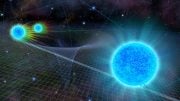

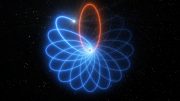
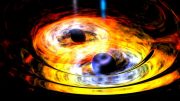
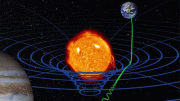


Of course Einstein would never had uttered “I told you so”. Amazing Man – amazing MIND!
Einstein’s theories are still making many contributions to interpreting the observations of modern physics. A remarkable achievement.
But, I wander if an additional factor is ever considered when observing the red shift due to the velocities of distant stars that could be caused by starlight passing through the gravitational fields of both the billions of intervening black holes and clumps of elusive dark matter ?
I have seen what I believe to be a simple mistake (assumption) that has been made for decades. Apparently no one else has ever noticed or realized that this “red shift” – although indeed it exists – cannot be seen with the naked eye. The reason is simply because stars do not emit light ONLY in the visible spectrum. Consequently, as the visible ultraviolet region of the starlight shifts to ultraviolet (and becomes invisible), the infrared region of the starlight shifts to visible red. (This simple fact should be obvious to anyone who’s ever given this any thought at all.) This is right up there with decades of every “scientist” mindlessly parroting that “The Universe is 13.8 Billion Lightyears Across” Across WHAT?? Long? Wide? Deep? Yes – these are all identical But more to the point RADIUS or DIAMETER?? No one would ever say – and to me this was further evidence of mindless copycats. Until very recently NO ONE EVER said “The Observable Universe” – although, to her credit, some small number of years ago, whenever asked, Dr. Michelle Thaller started inserting the disclaimer: “The Universe could be bigger than this. WE DON’T KNOW.” Finally, now, the claim is that the Observable Universe is 46.5 billion lightyears – just because it took TIME for us to SEE the light from the edge of the Observable Universe – exactly as I’ve thought for decades. Still, no one has ever pointed out that this “13.8 billion” number was how they concluded the AGE of the Universe. How much time will these “scientists” need to correct their calculation of the Universe’s age?? (And precisely what is a “scientist” anyway? ANYONE can be a “scientist”. There’s no Major in “Science”, and there’s no “Degree” in “Science” either!! My grade school children are all “scientists”. On another front, anyone who has ever paid attention while playing with magnets can very easily prove every school textbook about magnets wrong in less than 5 minutes. For as much as Science opposes God and goes out of their way to discredit God or disprove His existence, the BIBLE has FAR more credibility. Y’all really ought to READ it sometime. John chapter 3, 14-17. Acts 2. (Y’all believe in SCIENCE?? Try understanding these…)